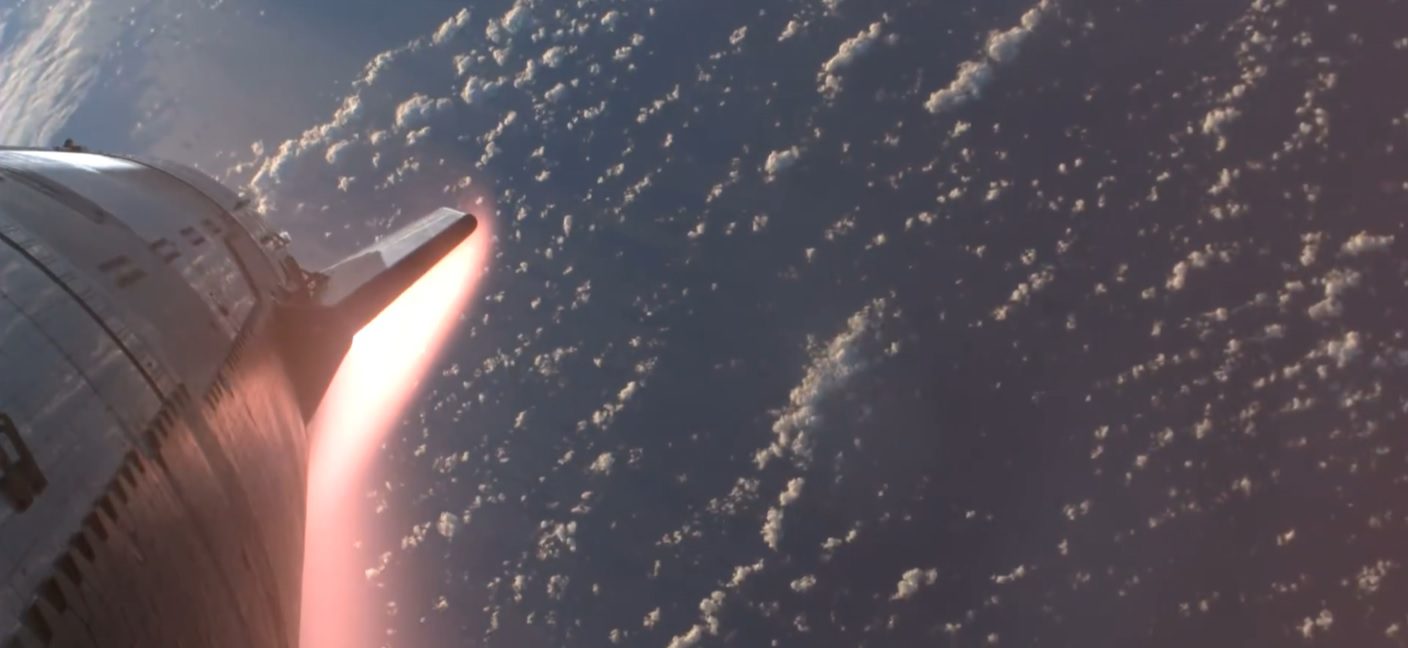After two failed launches, hopes were high that the Super Heavy first stage and its Starship upper stage/reusable spaceship would perform well on the combination’s third flight attempt. Those hopes were not misplaced. At 1325 GMT on 14 March, the mammoth SpaceX rocket assembly rose from its launch pad at ‘Starbase’ Boca Chica, Texas, and climbed majestically into the air. All of its 33 first-stage engines burned well, firing all the way until some were shutdown at MECO (most engines cut off) ahead of the hot staging manoeuvre. A burn of the Starship Raptor engines was then initiated, sending the Starship on its way.

The Super Heavy-Starship combo on IFT-3 is launched. Courtesy: SpaceX
By the end of the second-stage shutdown, the spacecraft was on a coasting suborbital trajectory with a planned re-entry and splashdown of the Starship stage over the Indian Ocean. A test of the Pez door (designed to deploy satellites on later missions) and a tank propellant transfer test (needed for lunar lander operations) were successfully carried out. However, a planned Starship engine restart did not happen.
The Super Heavy booster (Booster 10) managed to get through a slower re-entry, but then fell into a roll. It was later reported that the landing approach engines suffered a partial relight failure. The ‘soft’ powered splashdown SpaceX had hoped for turned into a full hard-crash splashdown.

The fin glows on Starship (Ship 28) during the re-entry of the IFT-3 mission…but it did not survive. Courtesy: SpaceX
SpaceX cameras onboard Starship during its re-entry revealed some fascinating views of glowing fiery plasma engulfing the vehicle and its control vanes as it fell. Plasma plume would usually cause a blackout on a smaller capsule re-entry craft, but Starship circumvented this problem by placing relay satellites at the back of the vehicle. Shielded from most of the plume, the satellites could send transmissions which were relayed by the TDRS satellites in GEO or by the Starlink constellation in LEO.
However, soon afterwards the data signals were cut off – an indication that the Starship had failed during re-entry. It was a sad reminder of STS-107 Columbia space shuttle disaster. At least this time no-one was onboard the flight.
There was some evidence of the ship struggling with roll control, followed by a pitch up, which was not commanded, and a tumble during re-entry. Some debris (perhaps thermal protection tiles) left the craft before it broke up.
“Ship 28 has been lost,” said a mournful SpaceX spokesman, marking the end of the Starship mission. However, the company has much to smile about: it has perfected the launch. Hopefully, it also has enough data to iron out the final re-entry and stage approach errors.
Starship re-entering Earth's atmosphere. Views through the plasma pic.twitter.com/HEQX4eEHWH
— SpaceX (@SpaceX) March 14, 2024
Conclusion: The IFT-3 Super Heavy/Starship launch can be counted as a major success, as can some of the mission’s experiments. SpaceX has, in effect, given the US a cost-effective heavy lift launch vehicle (SLS works but is very expensive to launch). So, we congratulate all at SpaceX who worked on this flight. The Super Heavy splashdown approach was a failure due to engine problems on the booster stage but this should be relatively easy to fix. However, the investigation into the re-entry failure will be more complicated. Starship was destroyed during re-entry, with a probable blackout of data from the key moments. This means that identifying what went wrong and working out how to fix it could be much harder. The roll issue might be easy to correct using uprating thrusters, or a correcting control algorithm. If it needs major body changes (eg to its fins) this will take much longer. There is still plenty for SpaceX to do.
An interesting analysis of the re-entry attitude is here:








